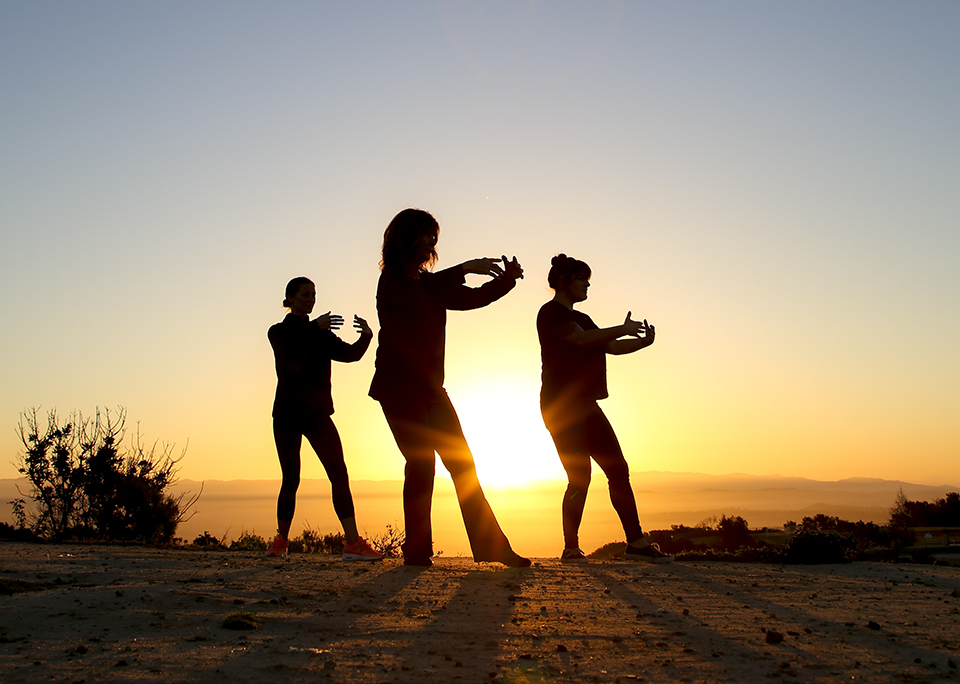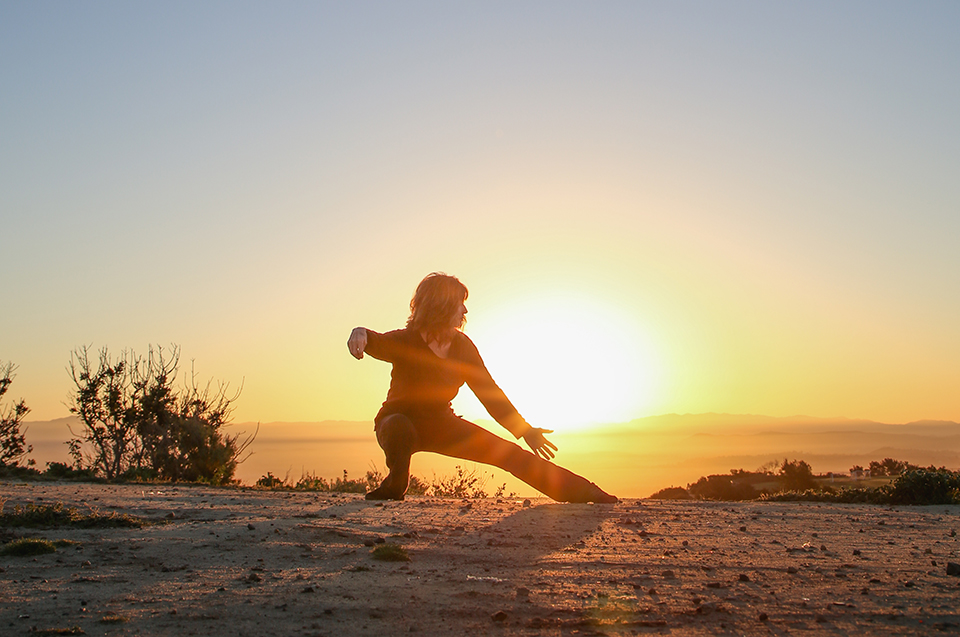
The ancient practice of tai chi, often described as “meditation in motion,” is a holistic exercise consisting of a series of slow, deliberate movements that flow into one another, increasing balance, flexibility, strength and focus. Local instructor Valarie Prince Gabel began studying on a whim in 1978—simply looking for something that would help her focus and center herself—and soon fell in love with the practice, becoming well-versed in various styles and primarily focusing on Guang Ping Yang, which she continues to teach in her classes today. She established the Kuang Ping School of Ta’i Chi in 1991 after nearly 10 years of instructing in Southern California.
Currently, she teaches directly through the city of Laguna Beach; her classes take place at the Lang Park Community Center on Monday and Thursday evenings, and prospective students can sign up in class or through the city’s website. We caught up with the instructor to discuss the fundamentals of this ancient practice and its various health benefits.
Laguna Beach Magazine: What are the primary health benefits of tai chi, and how do they manifest themselves in your classes?
Valarie Prince Gabel: [Tai chi is] a gentle form of exercise that can bring you better health, better flexibility, and bring body, mind and spirit more … in sync. … In this particular class and this particular [Guang Ping Yang] style of tai chi, … we have about 45 minutes of warm-ups, we do a meditation for about 10 minutes and then we work on our tai chi form. … When you’re doing your warm-up and when you’re doing your tai chi form, according to traditional Chinese medicine, [you’re] activating all of the meridians in the body which carry the … life energy …[and help with] self-healing.
Why is tai chi known to be particularly helpful in relieving stress and anxiety?
VPG: When you’re actually involved in the practice of tai chi, you’re encouraged to have your entire focus right here [and] now instead of divided someplace else, so that you’re bringing your mind into your body. … You are slowing your breath and you are paying more attention to what’s going on, so you are calming your mind.

What sets tai chi apart from other meditative exercises like yoga?
VPG: In a lot of ways, tai chi and yoga, you know, there are a lot of similarities. [With tai chi] there’s a constant … [movement]—albeit, it’s very slow, which takes a lot of control and it takes a lot of practice to be able to execute it—but still it’s constant flowing from one to the other rather than holding a position.
For which age groups and athletic levels is tai chi a good source of exercise?
VPG: It’s highly beneficial to anybody; it doesn’t matter what your age. I know that for young people … because it is slow and it is one step at a time, it can be a bit of a turnoff because they want things so fast—instant gratification. This does take some patience, and if you don’t have it, [tai chi] can teach it to you. … It did teach me to be patient, to slow down, to look at each movement, to feel each movement—it’s really excellent.
What do you enjoy most about the practice of tai chi?
VPG: It does not get boring. Even though you are doing the same movement over and over and over again, you’re continually refining … It’s constantly evolving and that’s what I love about it, because I’m evolving, [too].
—Written by Caroline Ruhland | Photos by Jody Tiongco




